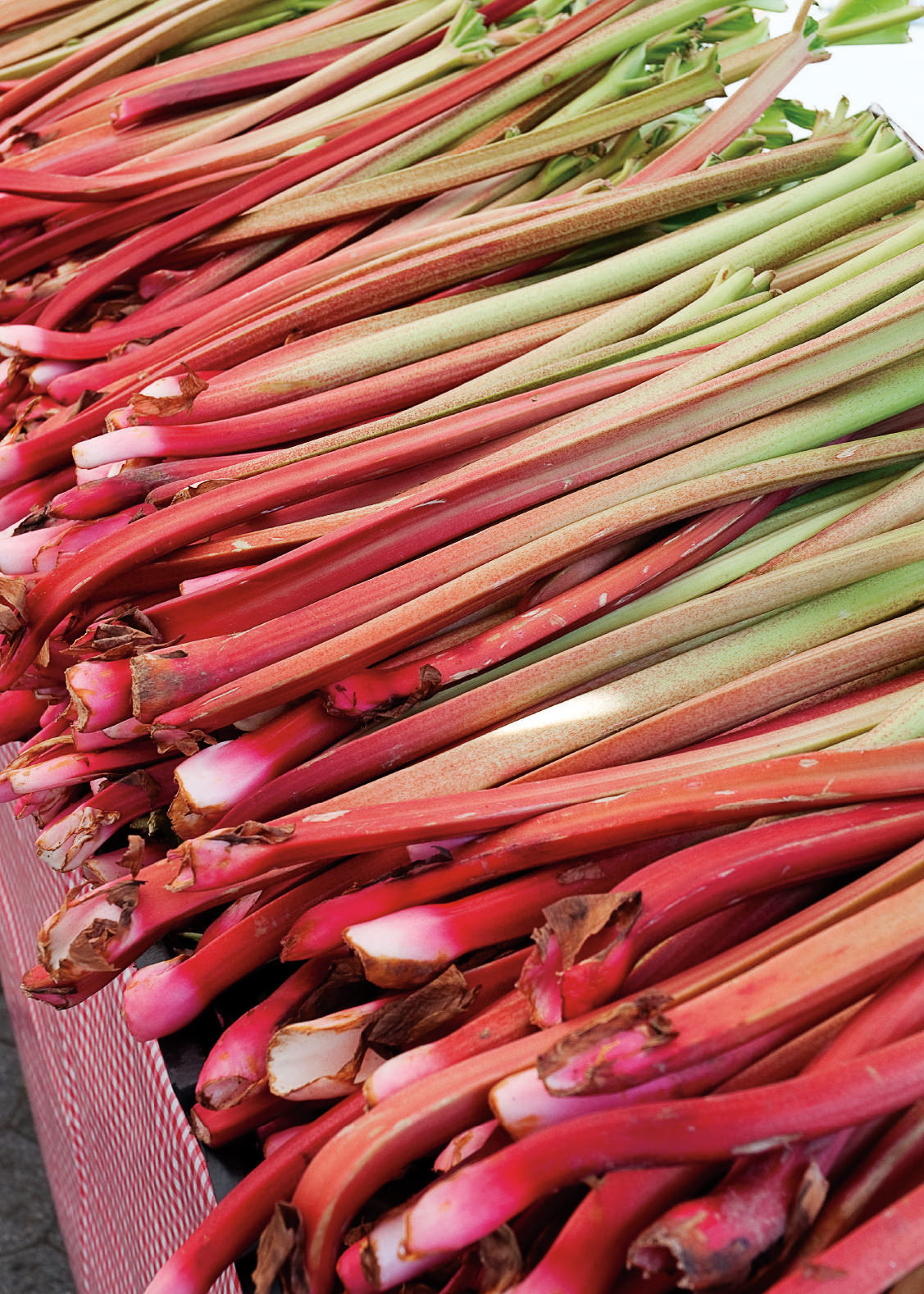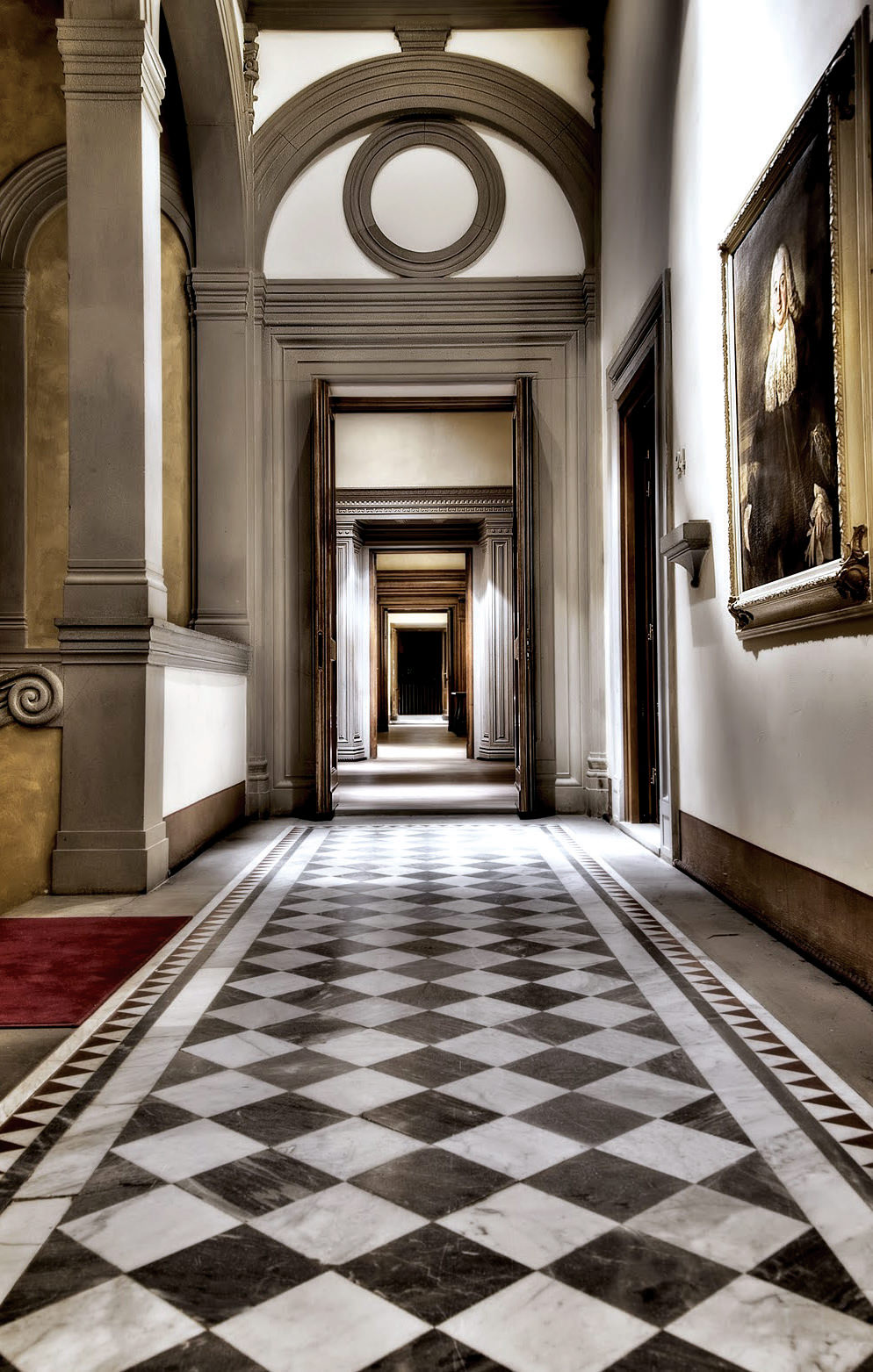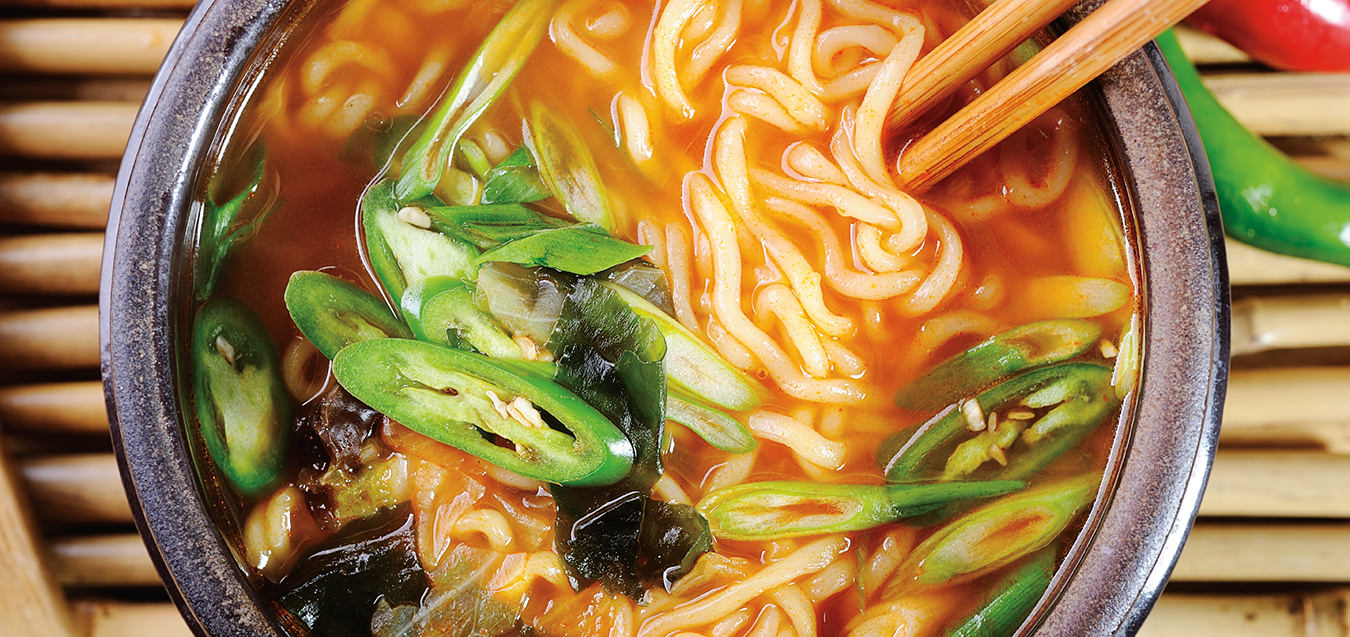-
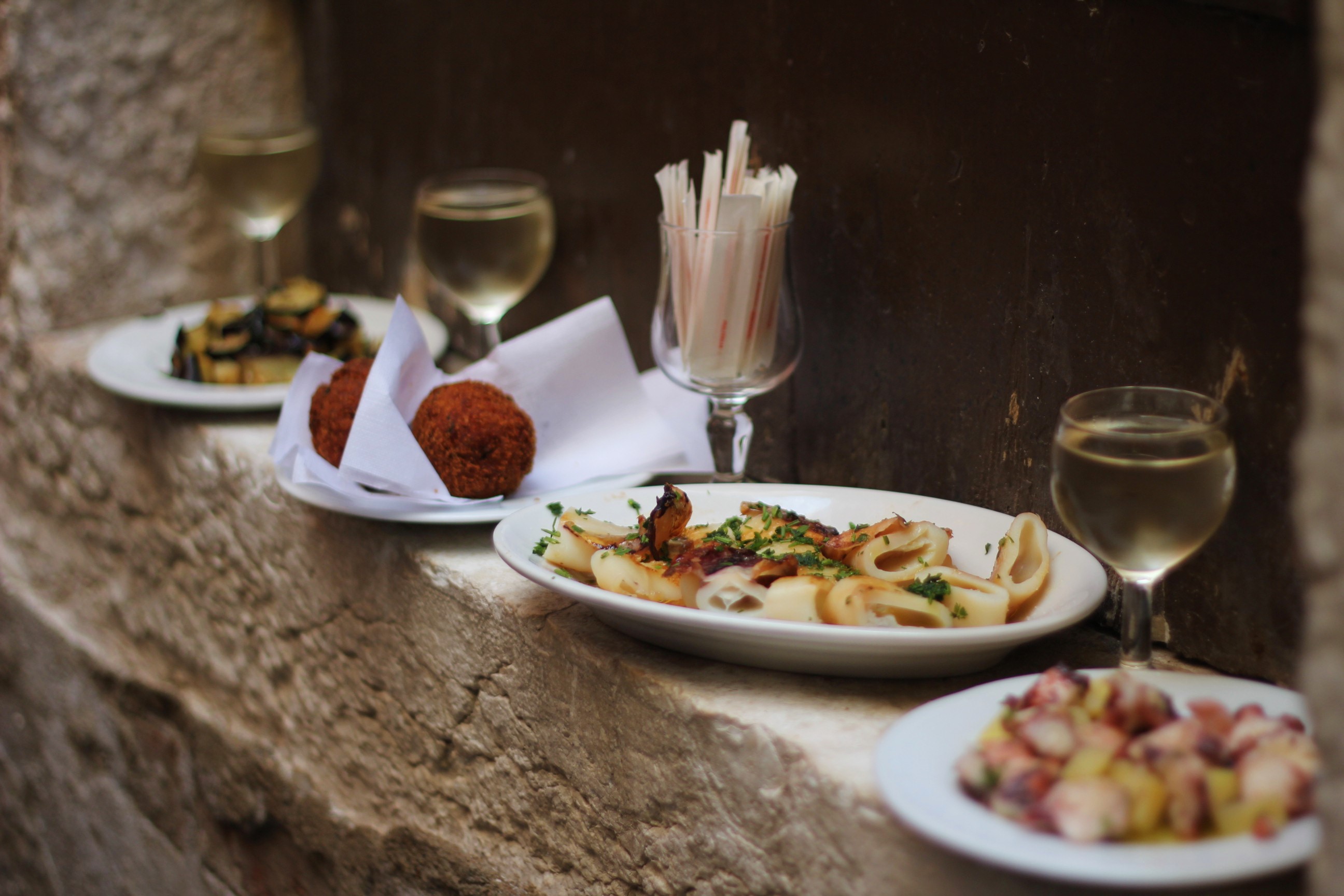
Venice offers one of the richest and most varied culinary scenes in Italy. Photo via Flickr, Andy L.
-

Venice’s best flavours derive from its lagoon seafood. Photo via Flickr, Darren and Brad.
-
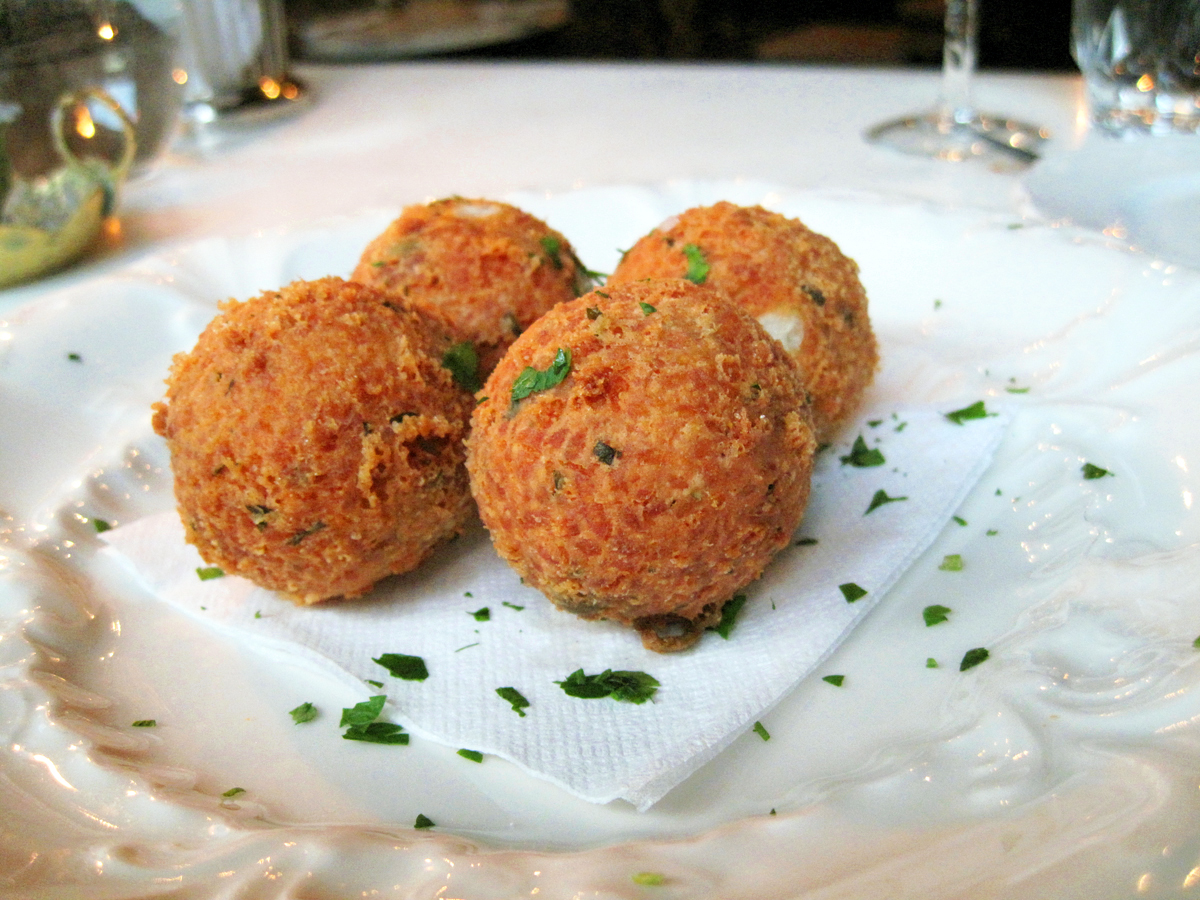
Arancini or rice balls. Photo via Flickr, bionicgrrrl.
-

Cicchetti or light, tapas-style bites. Photo via Flickr, Michela Simoncini.
-

Venice is an excellent place to nibble on polenta, either fried on its own or as part of a larger dish. Photo via Flickr, Andrea Sartorati.
-
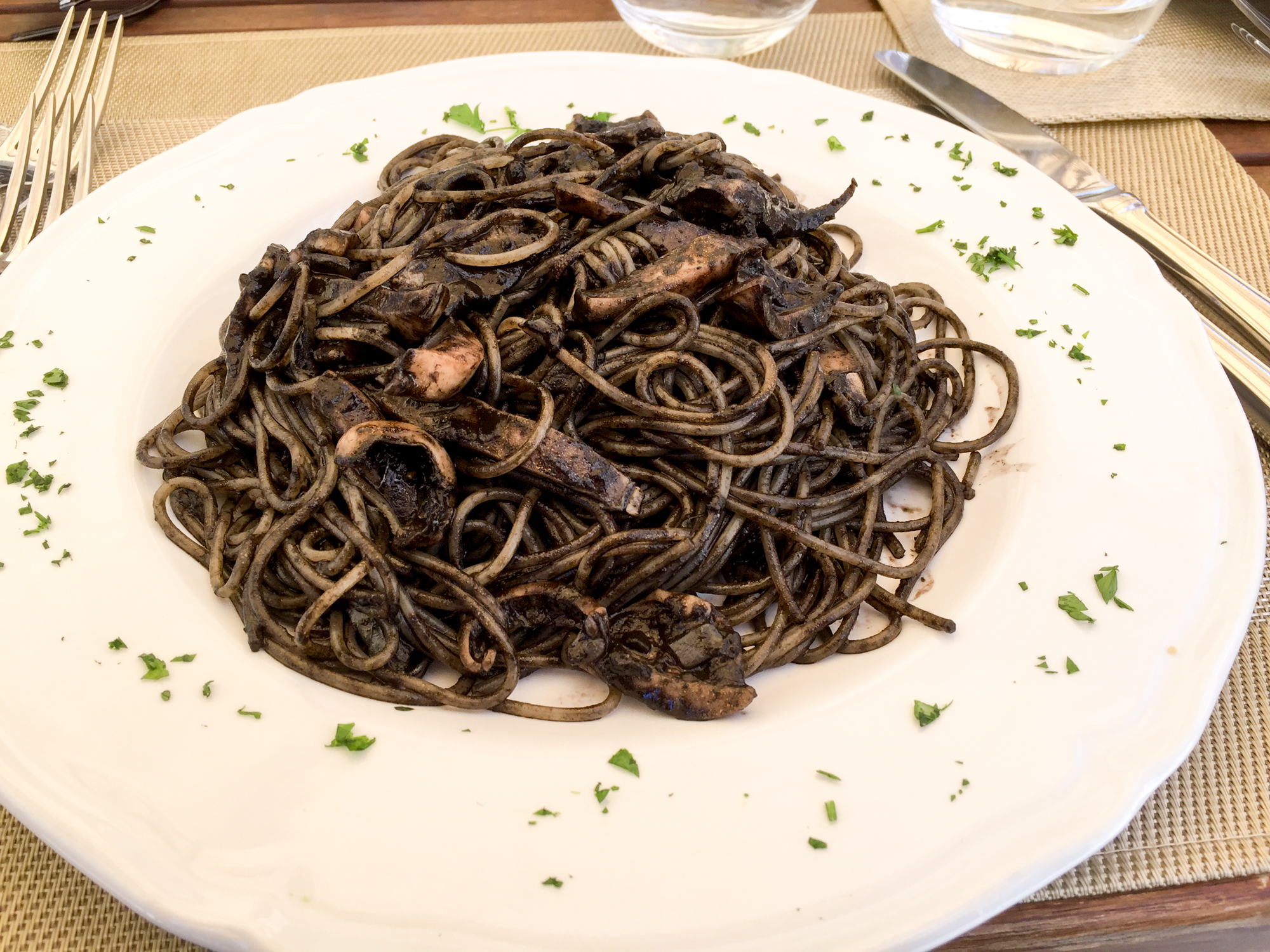
Thick, hearty “black pasta” coloured by squid or cuttlefish ink is a notable Venetian dish. Photo via Flickr, Darren and Brad.
-

Photo courtesy of Uniworld.
A Guide to Dining in Venice
Off the eaten track.
There are regions in Italy justly celebrated for their food: Naples with its doughy pizzas, its ripe tomatoes; Rome with its salty, succulent cacio e Pepe pasta, its olive-scented cicoria sautéed with garlic and piquant pepperoncino; Bologna with the hearty, meaty pasta dish that bears its name. But for many travellers, Venice—for all its beauty—remains a culinary disappointment.
For those who have only made it to the touristic restaurants around San Marco, with their multilingual menus and their blown-out photographs of dishes, such disappointment is understandable. Anyone who orders what most North Americans think of as “typical” Italian dishes—pizza, many pastas—is liable to find that Venice serves expensive second-rate imitations of other region’s specialties.
But in dining, as in all things, Venice rewards the intrepid. And for those willing to leave behind their traditional notions of “good” Italian food and embrace the brackish, complex flavours of the city’s lagoon, Venice offers one of the richest and most varied culinary scenes in Italy—one that reflects the city’s cosmopolitan and multicultural history.
When I travelled to Venice this spring on Uniworld’s River Countess, I was dubious about the city’s culinary prospects. I’d been before—often all too briefly—and had been disappointed. But when I wandered alone through the alleys of Cannareggio, or past the buskers and students filling up the piazzas of student Dorsoduro, armed with dedication, I found a city filled with subtle, rich flavours: all the more savoured because the discovery was earned.
Venice offers one of the richest and most varied culinary scenes in Italy—one that reflects the city’s cosmopolitan and multicultural history.
Do: skip dinner.
Venice’s restaurants tend to be expensive. But a leisurely meal of cicchetti—light, tapas-style bites, often involving crispy bread and fish-based spreads—enjoyed over the course of a couple hours and divided among many of the city’s numerous wine bars, can be far cheaper and better. Venice’s best flavours derive from its lagoon seafood, and a plate of varied cicchetti is the best way to sample them all. Start by ordering a glass of ombra, a local term for a small glass of wine, to be drunk quickly as part of a giro, or bar crawl. Pair with baccalà manticato, a creamy, moreish paste of stockfish served on flatbread, or an order of quintessentially Venetian sarde in saor, sardines served with onion and a sweet-sour vinegar sauce.
Where to try it: While many centrally-located restaurants can be pricey, the wine bar Naranzaria (San Polo, 130), located just off the Mercato Rialto in San Polo, offers stunning views of the Grand Canal and reasonable prices (€16 for a plate of assorted cicchetti that can easily double as a filling meal for one).
Don’t: just stick to pasta.
While some of Venice’s best dishes involve pasta—most notably the thick, hearty “black pasta” coloured by squid or cuttlefish ink from the local lagoon—the city’s best carbohydrates come from other sources. Try some buttery, cheesy polenta made from corn flour, either lightly fried on its own or as a counterpoint for other flavours in dishes like polenta e sepie (polenta with squid—another ubiquitous Venetian ingredient) or, for vegetarians, polenta infasiolà (polenta with beans).
Where to try it: Hidden in a barely-marked square just a few minutes’ walk from the Rialto in San Marco, Osteria Il Milion (Corte Del Milion 5841) claims to be Venice’s oldest tavern-style restaurant, and features traditional dishes in a convivial atmosphere. Or, if you’re looking for fantastic food at impossibly cheap prices, try the pre-prepared dishes at Rosticceria Gislon (Calle de la Bissa, 5424/a), where the affable winking proprietor once doubled my order of arancini (fried rice balls—a Sicilian specialty that sometimes appears on Venetian cicchetti menus) at no cost.
Do: try a cocktail or two.
While a glass of prosecco never is amiss (during Carnevale season, when people are dressed in their most expensive costume finery, holding one is practically a safety requirement), Venice is one of the best cities in Italy for cocktails. The bellini, after all, was invented at Harry’s Bar on Piazza San Marco, and some of today’s most iconic mixed drinks—the herbaceous Aperol Spritz, the sticky-sweet Campari Spritz, and the elderflower-tinged Hugo—herald from Venice. While the sumptuous 18th-century surroundings of Caffé Florian, a labyrinth of ornate frescoes presided over by impeccably knowing waiters, provides Venice’s best (if often most touristy) atmosphere, if you’re looking for interesting mixology head further afield to Caffè dei Frari. While the downstairs section of the bar, which is covered with 19th-century paintings, looks like an ordinary ombra joint (complete with excellent cicchetti menu), the upstairs features an elaborate cocktail menu inspired by the international journeys of Venetian merchant Marco Polo across the Silk Road, with ingredients that include Chinese tea and lychee.
Uniworld’s 10-day Gems of Northern Italy Tour—largely based in Venice on the River Countess, one of the only hotel-riverboats in Venice—start at €3,559, all-inclusive.
_________
Never miss a story. Sign up for NUVO’s weekly newsletter, here.

